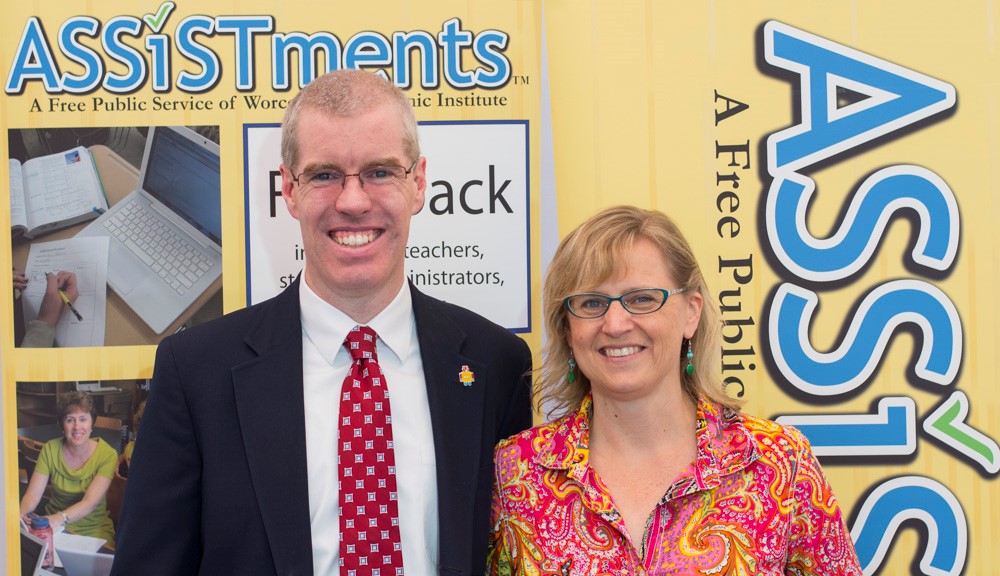Year-end test scores of Massachusetts middle school students whose teachers used ASSISTments, a Web-based tutoring platform developed at Worcester Polytechnic Institute (WPI), as a central part of their mathematics instruction were significantly better than those of students whose teachers did not use the platform, according to a recent study published in the Journal of Educational Computing Research. Conducted by Neil T. Heffernan, PhD, of WPI, and Kenneth R. Koedinger, PhD, and Elizabeth A. McLaughlin, both of Carnegie Mellon University, the study examined data collected from 1,240 seventh grade students in four schools in an urban Massachusetts school district.
The study compared students’ seventh-grade year-end test scores to their comparable scores at the end of sixth grade. Students at three schools where ASSISTments was used were shown to significantly outperform their peers at the fourth school, where it was not used. The improvement in test scores was pronounced for all students in the schools where ASSISTments was used, and especially so for special education students whose learning needs are less likely to be met in regular class instruction.
The new study is the latest to show the effectiveness of ASSISTments in improving student performance. A 2009 study published in the Journal of Research on Technology in Education showed that fifth-graders in a rural school district who completed their daily homework using ASSISTments learned two-thirds more than students who used traditional paper and pencil methods.
ASSISTments (the name blends tutoring "assistance" with student "assessments") helps students learn by presenting them with problems and then offering carefully structured assistance. The software records how students use the system and meticulously tracks their progress. The system has been developed at WPI over the past decade wi th more than $9 million in support from the National Science Foundation, the U.S. Department of Education, and other federal and state agencies.
At WPI, the ASSISTments platform is the heart of a research and school collaborative that currently includes 35 school districts across the United States that use the system for instruction and assessment and help improve it by adding content. ASSISTments lets teachers add content in any domain. WPI has received funding to create middle school math and science libraries, but teachers elsewhere have used the platform to develop content for such diverse topics such as English and French vocabulary and training teachers to recognize common misconceptions.
"ASSISTments is a powerful tool for understanding how well students are learning day to day," said Heffernan, professor of computer science and co-director of the university's Learning Sciences and Technologies Program." This, essentially, is the kind of formative assessment data that saves teachers' time and makes their teaching more effective because they know who needs help as it's needed and who can move forward and remain engaged and challenged.
"Teachers determine what instruction or remediation is needed to raise student achievement, which will also lead to improved scores on year-end tests," adds Heffernan, who leads the ASSISTments research team. "This is exactly the kind of data-driven instruction advocated by U.S. Secretary of Education Arnie Duncan, who cited ASSISTments in the 2010 National Education Technology Plan."
WPI's award-winning research has demonstrated that consistent use of ASSISTments significantly improves both testing and learning. Massachusetts has the most active participation in ASSISTments—hundreds of teachers and thousands of students use the tool in daily classwork and homework. Maine, where every student is assigned a laptop for academic use, recently deployed ASSISTments across a number of its middle schools, and the software has also been used in schools in New Hampshire, Pennsylvania, and Montana. "Our goal is to make ASSISTments available to every school where there’s an interest," says Heffernan. "While WPI owns the intellectual property, we've decided to make ASSISTments available free to schools and have briefed the leadership in three state departments of education about how they can use ASSISTments to help their schools."




